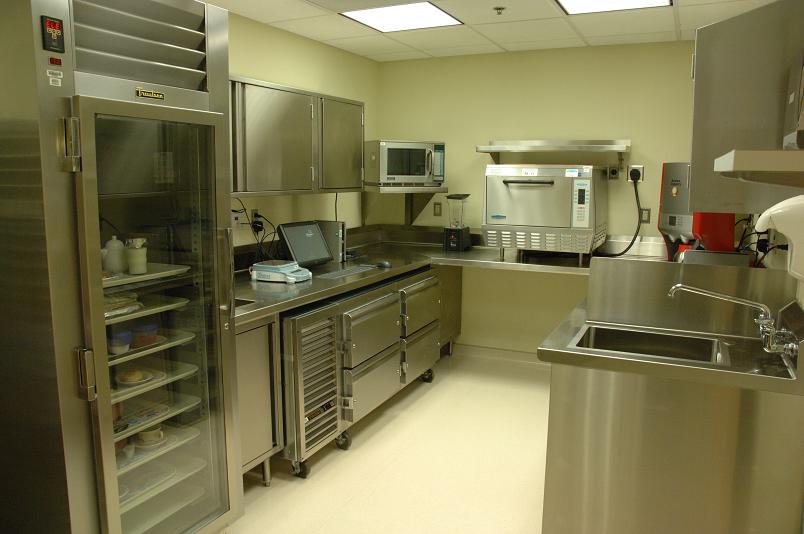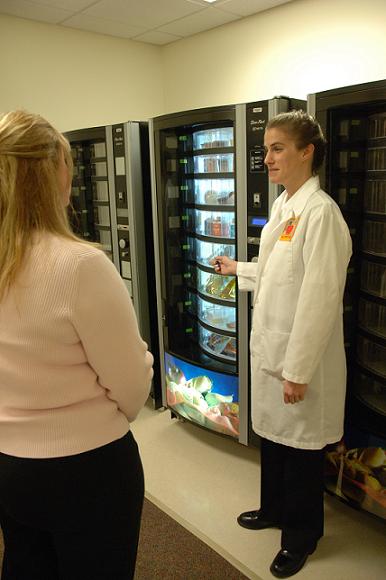A person’s weight is essentially a balancing act. The food and drink that we consume is converted by our bodies into energy. As we do things throughout the day, we use this energy. Some things that we do like breathing and sleeping use very little energy. Other activities like walking or standing use more energy, while running or riding a bike need even more energy. Weight gain occurs when the amount of energy we take in from our food is greater than the energy our bodies use over time. An important part of understanding weight regulation is focused on studying how much and what people eat.
The Metabolic Research Kitchen: In some of the research studies conducted in the Metabolic Clinical Research Unit, our metabolic research kitchen staff prepares controlled meals for study participants. This special kitchen is not for use by patients. It is only used by specially trained staff who are dedicated to making these special meals tasty and attractive. A research dietitian designs meals to meet specific nutrient and calorie needs based on research goals for each study. All foods and beverages are precisely measured and prepared to assure accuracy. For some studies, subjects may pick up a supply of meals that they take home, while for other studies, subjects eat the meals prepared in the metabolic kitchen in their rooms or elsewhere on the unit. Meals are also prepared here for subjects who are participating in studies in the metabolic suites.

Food Preference and Eating Behavior Studies
The Metabolic Clinical Research Unit uses a variety of methods to study what, when, and how much people choose to consume. We want to better understand what influences these decisions. Subjects may be asked to fill out various questionnaires about their eating habits or write down what they eat for several days. They also may participate in studies where they actually choose what, when, and how much they eat in a test situation.
Food Arrays: Studies using food arrays allow researchers to investigate choices people make when presented with a wide range of foods. Subjects choose foods much like what they would from a buffet-style meal. The dietitians then analyze the subject’s choices to better understand eating behaviors. Current studies are looking at food choices in both children and adults.

Computerized Vending Machines: The Metabolic Clinical Research Unit has three specialized vending machines. These machines can be stocked with a wide range of foods, such as juices, milk, fruits, vegetables, sandwiches, potato chips, yogurt, various desserts, and other choices. When research subjects are participating in a study which incorporates these vending machines, they are given a unique key-like card to insert into the machine to make a food selection. These vending machines are useful to see when and what people choose to eat.
